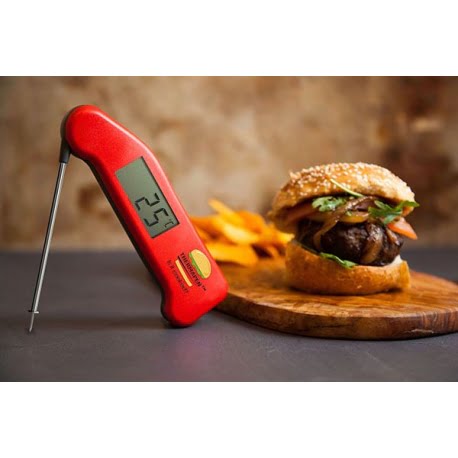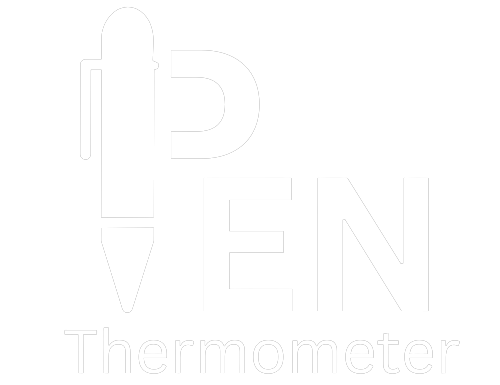The Ultimate Guide to Penshape Food Thermometers: Precision and Convenience in Cooking

What is a Penshape Food Thermometer?
A penshape food thermometer is a specialized cooking tool designed to accurately measure the internal temperature of food items. Its distinct slim, pen-like design not only enhances portability but also facilitates ease of storage, making it a practical choice for both home cooks and professional chefs. These thermometers typically include a probe that can quickly and efficiently gauge temperatures, crucial for ensuring food safety and optimal cooking results.
Various models of penshape food thermometers are available on the market, each offering unique features tailored to different cooking environments. For instance, some thermometers are equipped with digital displays for quick reading, while others come with backlighting for use in low-light conditions. Additionally, many designs boast instant-read capabilities, allowing for almost immediate temperature feedback. This is especially advantageous when cooking meats or baking, where specific temperatures must be met for the best results.
Compared to traditional food thermometers, penshape models present notable advantages. Their elongated form allows for easy insertion into various food types, while their compact size makes them more convenient to handle. Furthermore, some penshape thermometers are designed with advanced technology that enables enhanced accuracy, ensuring that users can rely on the readings they receive. Whether in a bustling professional kitchen or during a home cooking session, this precision is vital for achieving consistently safe and delicious meals.
The simple portability and efficiency of penshape thermometers contribute significantly to their growing popularity among culinary enthusiasts. By integrating functionality with an ergonomic design, they represent an evolution in temperature measurement tools, merging convenience with precision in the culinary world.
Benefits of Using Penshape Food Thermometers

Penshape food thermometers offer a range of benefits that significantly enhance the cooking experience for both amateur cooks and professional chefs. One of the primary advantages of their compact design is the ability to take precise measurements in tight or challenging spaces. This feature is particularly useful when dealing with smaller cuts of meat or intricate dishes where access may be limited, allowing for accurate readings without the need for bulky instruments.
Another notable benefit is the quick response time these thermometers provide. Unlike traditional meat thermometers, panshape models can deliver instant temperature readings, which helps streamline cooking processes and ensures that meals are cooked to perfection. This immediate feedback allows cooks to make more informed decisions regarding cooking times and methods, thereby improving overall efficiency in the kitchen.
Temperature accuracy is crucial for food safety, and penshape thermometers excel in this area. They enable cooks to monitor food temperatures meticulously, reducing the risk of foodborne illnesses. By ensuring that meat, poultry, and other dishes reach the appropriate internal temperatures, consumers can feel confident that their meals are both tasty and safe to eat.
Ease of cleaning is another practical advantage of using penshape food thermometers. Many models feature waterproof designs or removable probes that simplify maintenance and ensure hygiene standards are met. This feature is especially beneficial for busy kitchens where cleanliness is paramount.
In summary, penshape food thermometers integrate precision, convenience, and safety into cooking routines. Their compact size, speedy readings, and straightforward maintenance make them invaluable tools in any culinary environment, contributing to enhanced cooking experiences for both novice cooks and culinary experts alike.
How to Use a Penshape Food Thermometer
Utilizing a penshape food thermometer is essential for achieving precise cooking results. To begin with, ensure that the thermometer is properly calibrated before use. This can be achieved by immersing the probe in ice water and verifying that it reads 32°F (0°C). If it does not, adjust the calibration according to the manufacturer’s instructions.
When measuring the temperature of solid foods like meats, insert the probe into the thickest part of the food, avoiding bones or fat, as these can give inaccurate readings. The ideal temperature range varies across different meats; for instance, poultry should reach 165°F (74°C), while pork should achieve at least 145°F (63°C). Similarly, baked goods such as cakes should ideally be around 210°F (99°C) when fully cooked, ensuring all components are well steamed without being overdone.
For liquids, such as soups or sauces, insert the thermometer probe into the center of the pot, ensuring it does not touch the bottom, which can lead to false temperature readings. A target temperature for most soups is around 160°F (71°C). It is important to wait for a few seconds for the reading to stabilize, ensuring an accurate measurement.
Post cooking, proper cleaning of the penshape food thermometer is crucial for maintaining hygiene and prolonging its lifespan. Wipe the probe with a sanitizing solution or warm soapy water, ensuring to rinse and dry thoroughly before storing. Develop a routine that includes checking your thermometer’s accuracy and cleaning it immediately after use to reinforce its reliability. By following these steps, users can ensure optimal functionality and safety, taking full advantage of the convenience and precision a penshape food thermometer provides in culinary activities.
Choosing the Right Penshape Food Thermometer for Your Needs

When it comes to selecting the ideal penshape food thermometer, several factors come into play, aligning the device’s functionality with your cooking style and requirements. One of the most crucial elements to consider is the temperature range. Different cooking methods often necessitate varying temperature thresholds; for instance, if you primarily grill meats or bake pastries, seek a thermometer showcasing a wide temperature range to accommodate diverse recipes.
Another key consideration is whether to opt for a digital or analog thermometer. Digital penshape thermometers are widely recognized for their quick readings and ease of use, particularly in busy kitchen environments. They often come with features such as backlit displays and hold functions, enhancing usability. In contrast, analog thermometers may appeal to those who prefer a traditional approach, providing a classic aesthetic while still delivering reliable accuracy. Assessing your comfort level with technology may guide you in making this decision.
Furthermore, durability should not be overlooked. Given that food thermometers can undergo significant wear and tear, selecting a model made from high-quality materials will ensure longevity and consistent performance. Additionally, consider the thermometer’s ease of use. Models featuring a comfortable grip and a clear display facilitate a smoother experience, especially for those who are new to cooking.
Price is another determining factor; varying models come with a range of price tags. However, investing in a moderately priced thermometer often pays off, as it may provide the functionality needed without compromising quality. Popular options on the market, supported by user reviews, include models from reputable brands such as ThermoWorks and Taylor, which have garnered praise for their reliability and precision. By evaluating these elements, both novice and experienced cooks can confidently find the best penshape food thermometer to elevate their culinary endeavors.
